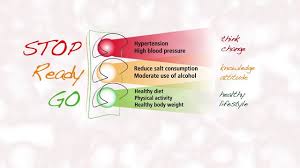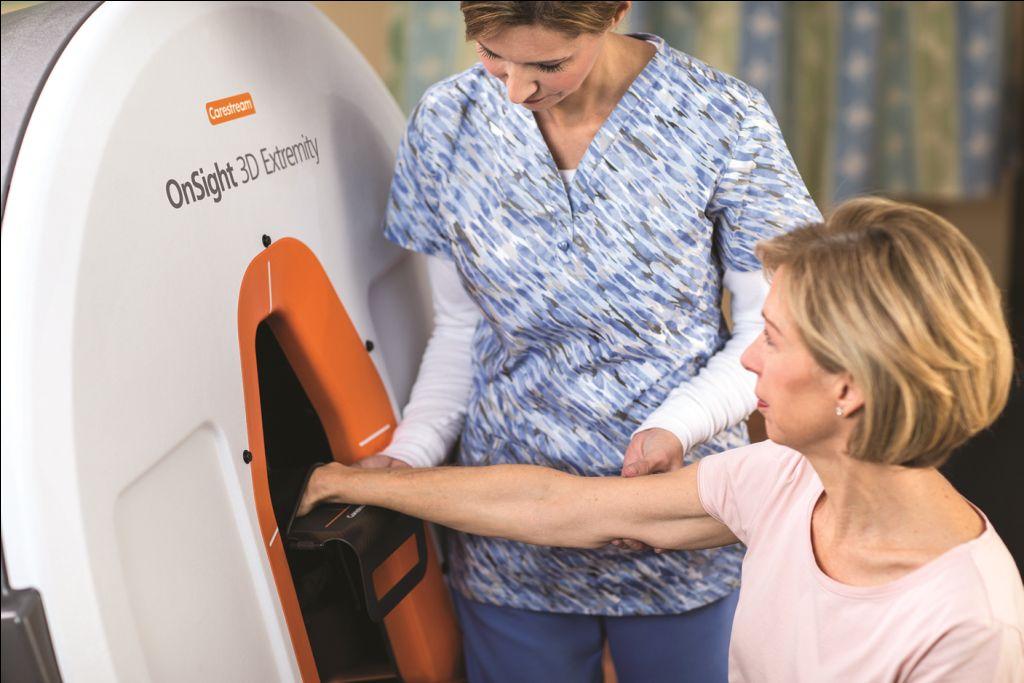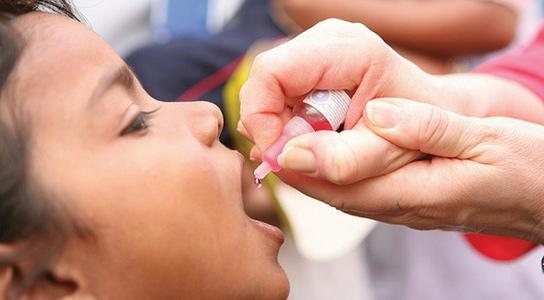
 Dr Margaret Chan,
Dr Margaret Chan,
Director-General , World Health Organization
“We live in a rapidly changing environment. Throughout the world, human health is being shaped by the same powerful forces : demographic ageing, rapid urbanization, and the globalization of unhealthy lifestyles. Increasingly, wealthy and resource-constrained countries are facing the same health issues. One of the most striking examples of this shift is the fact that noncommunicable diseases such as cardiovascular disease, cancer, diabetes and chronic lung diseases have overtaken infectious diseases as the worlds leading cause of mortality. One of the key risk factors for cardiovascular disease is hypertension – or raised blood pressure.

Hypertension already affects one billion people worldwide, leading to heart attacks and strokes. Researchers have estimated that raised blood pressure currently kills nine million people every year. But this risk does not need to be so high. Hypertension can be prevented. Doing so is far less costly, and far safer for patients, than interventions like cardiac bypass surgery and dialysis that may be needed when hypertension is missed and goes untreated. Global efforts to tackle the challenge of noncommunicable diseases have gained momentum since the 2011 United Nations Political Declaration on the prevention and control of noncommunicable diseases. The World Health Organization is developing a Global Plan of Action, for 2013-2020, to provide a roadmap for country-led action for prevention and control of non-communicable diseases. WHOs Member States are reaching consensus on a global monitoring framework to track progress in preventing and controlling these diseases and their key risk factors. One of the targets envisaged is a substantial reduction in the number of people with raised blood pressure.
Hypertension is a silent, invisible killer that rarely causes symptoms. Increasing public awareness is key, as is access to early detection. Raised blood pressure is a serious warning sign that significant lifestyle changes are urgently needed. People need to know why raised blood pressure is dangerous, and how to take steps to control it. They need to know that raised blood pressure and other risk factors such as diabetes often appear together. To raise this kind of awareness, countries need systems and services in place to promote universal health coverage and support healthy lifestyles : eating a balanced diet, reducing salt intake, avoiding harmful use of alcohol, getting regular exercise and shunning tobacco. Access to good quality medicines, which are effective and inexpensive, is also vital, particularly at the primary care level. As with other noncommunicable diseases, awareness aids early detection while self-care helps ensure regular intake of medication, healthy behaviours and better control of the condition.
High-income countries have begun to reduce hypertension in their populations through strong public health policies such as reduction of salt in processed food and widely available diagnosis and treatment that tackle hypertension and other risk factors together. Many can point to examples of joint action across sectors that is effectively addressing risk factors for raised blood pressure. In contrast, many developing countries are seeing growing numbers of people who suffer from heart attacks and strokes due to undiagnosed and uncontrolled risk factors such as hypertension. This new WHO global brief on hypertension aims to contribute to the efforts of all Member States to develop and implement policies to reduce death and disability from noncommunicable diseases.

Prevention and control of raised blood pressure is one of the cornerstones of these efforts.”
Regional Director, World Health Organization, South-East Asia Region
” The focus of this years World Health Day is high blood pressure also known as hypertension.
High blood pressure is the single most important risk factor for mortality, accounting for 1 in every 10 deaths in the South-East Asia Region. High blood pressure increases the risk of heart attack, stroke, loss of vision and kidney disease. Each year, hypertension kills nearly 1.5 million people in our Region.
High blood pressure and related noncommunicable diseases have become rampant. Globalization and unplanned urbanization are driving unhealthy lifestyle patterns in the population, such as increased consumption of processed foods containing excessive salt, low levels of physical activity, and use of tobacco and alcohol. In addition, increasing levels of mental stress contribute to the adoption of unhealthy behaviours thus putting people at a higher risk of acquiring hypertension and related noncommunicable diseases.
High blood pressure can affect anyone regardless of age, race, ethnicity, gender or income level. Today, one in three adults in WHOs South-East Asia Region has hypertension. As the population of our Region ages, more and more people are likely to be affected. The good news is that high blood pressure is both preventable and treatable. A holistic approach based on health promotion and primary prevention is required to address risk behaviours that cause hypertension and related noncommunicable diseases. There is a need to promote healthy lifestyle behaviour among populations. This includes increased physical activity to maintain a healthy weight; avoiding tobacco use and limiting alcohol intake; and consumption of a healthy diet that is rich in fruits and vegetables, and low in saturated fats and salt. Promoting healthy behaviours will reduce mortality not only due to hypertension-related cardiovascular diseases but also due to other noncommunicable diseases such as diabetes, cancer and chronic respiratory diseases. Therefore, it should be our priority to educate and motivate people of all ages and in all walks of life to be proactive in preventing the onset of hypertension, by making health-promoting behaviours a part of their everyday lives.
Prevention and management of hypertension and related noncommunicable diseases is not the responsibility of the health sector alone but requires integrated, multisectoral, multidisciplinary and culturally relevant approaches. As most of the major determinants of the disease burden lie outside the health sector, we need to ensure that the strategy for prevention and control of hypertension and related noncommunicable diseases cuts across all sectors and involves collaboration with many stakeholders. Education and labour, food and nutrition, transport and communications, urban development, sports and youth affairs sectors, all need to come together to design interventions to raise awareness and encourage people to make healthy lifestyle choices. National governments of Member States in the South-East Asia Region need to institute programmes in schools and workplaces towards healthy eating and effective physical fitness. The governments also need to work with the food industry to put regulations in place for decreasing the amount of salt/sodium added to processed foods and increasing the availability of healthier food options.
High blood pressure is a silent killer with no signs or symptoms. Many people, therefore, do not realize that they have hypertension. Thus, alongside promoting healthy behaviours for prevention of hypertension, it is also important to educate the population about regular check-ups of blood pressure levels as a means of timely diagnosis of hypertension. Timely diagnosis and treatment can avoid complications such as stroke, heart attacks, kidney and eye damage. It is possible to diagnose and treat hypertension at the primary health care level using simple equipment and standard treatment guidelines. Health systems need to be strengthened to make these services available, affordable and accessible. Improved access and affordability should particularly focus on groups for whom the reach of health programmes is low. In addition to improved access to treatment, counselling should be offered to promote
adherence to prescribed medicines and adoption of healthy lifestyles.
In September 2011, at the historic meeting of the United Nations General Assembly on noncommunicable diseases, Member States made commitments to take concerted and comprehensive actions for prevention and control of noncommunicable diseases. These commitments must now be translated into concrete actions through adoption of effective public policies. Adequate resources should be dedicated to promote healthy lifestyles, empower communities and strengthen primary health systems to thwart the growing burden of these diseases.
On World Health Day 2013, I urge all Member States and partner agencies to take tangible and sustained actions to combat high blood pressure through national and local public health agencies and other organizations within and beyond the health sector. Preventing and controlling hypertension means reducing disease, disability and death by protecting the people of the South-East Asia Region from the risk of heart disease, stroke and related noncommunicable diseases, and thereby, further increasing their health and well-being.
F A C T F I L E – High Blood Pressure
- Globally cardiovascular disease accounts for approximately 17 million deaths a year, nearly one third of the total. Of these, complications of hypertension account for 9.4 million deaths worldwide every year. Hypertension is responsible for at least 45% of deaths due to heart disease and 51% of deaths due to stroke.
- Nearly 80% of deaths due to cardiovascular disease occur in low- and middle-income countries. They are the countries that can least afford the social and economic consequences of ill health. Current age standardized mortality rates of low-income countries are higher than those of developed countries.
- High blood pressure (also known as raised blood pressure or hypertension) can lead to heart attack, stroke and other serious health problems.
- High Blood Pressure affects one in three adults worldwide and leads to more than 9 million deaths worldwide.
- Affects men more than women.
- Is implicated in 13% of deaths worldwide.of deaths worldwide.
- High Blood Pressure can also cause kidney failure, blindness, rupture of blood vessels and brain impairment.
- Many people do not know that they have high blood pressure because it does not always cause symptoms. Early detection is the key.
- Even though it is easily diagnosed and treated, many people do not have access to basic health services, particularly in low- and middle-income countries.
What is high blood pressure ?
Blood pressure is measured in millimetres of mercury (mm Hg) and is recorded as two numbers usually written one above the other. The upper number is the systolic blood pressure – the highest pressure in blood vessels and happens
when the heart contracts, or beats. The lower number is the diastolic blood pressure – the lowest pressure in blood vessels in between heartbeats when the heart muscle relaxes. Normal adult blood pressure is defined as a systolic
blood pressure of 120 mm Hg and a diastolic blood pressure of 80 mm Hg. However, the cardiovascular benefits of normal blood pressure extend to lower systolic (105 mm Hg) and lower diastolic blood pressure levels (60 mm Hg). Hypertension is defined as a systolic blood pressure equal to or above 140 mm Hg and/or diastolic blood pressure equal to or above 90 mm Hg. Normal levels of both systolic and diastolic blood pressure are particularly important for the
efficient function of vital organs such as the heart, brain and kidneys and for overall health and wellbeing.
Causes of hypertension ?
There are many behavioural risk factors for the development of hypertension. It includes
consumption of food containing too much salt and fat, and not eating enough fruit and vegetables
harmful levels of alcohol use
physical inactivity and lack of exercise
poor stress management.
These behavioural risk factors are highly influenced by peoples working and living conditions.
In addition, there are several metabolic factors that increase the risk of heart disease, stroke, kidney failure and other complications of hypertension, including diabetes, high cholesterol and being overwight or obese. Tobacco and hypertension interact to further raise the likelihood of cardiovascular disease.
The symptoms of high blood pressure
Most hypertensive people have no symptoms at all. There is a common misconception that people with hypertension
always experience symptoms, but the reality is that most hypertensive people have no symptoms at all. Sometimes hypertension causes symptoms such as headache, shortness of breath, dizziness, chest pain, palpitations of the heart and nose bleeds. It can be dangerous to ignore such symptoms, but neither can they be relied upon to signify hypertension.
Hypertension is a serious warning sign that significant lifestyle changes are required. The condition can be a silent killer and it is important for everybody to know their blood pressure reading.
Hypertension and life threatening disease
It is dangerous to ignore high blood pressure, because this increases the chances of life-threatening complications. The higher the blood pressure, the higher the likelihood of harmful consequences to the heart and blood vessels in major organs such as the brain and kidneys. This is known as cardiovascular risk, and can also be high in people with mild hypertension in combination with other risk factors e.g., tobacco use, physical inactivity, unhealthy diet, obesity, diabetes, high cholesterol, low socioeconomic status and family history of hypertension . Low socioeconomic status and poor access to health services and medications also increase the vulnerability of developing major cardiovascular
events due to uncontrolled hypertension.
What is the burden of high blood pressure and hypertension?
In 2009, WHO attributed 13% of all deaths globally to high blood pressure, making it an area of prime importance for public health worldwide. Cardiovascular disease, for which high blood pressure is a contributing factor, causes 42% of all deaths across the WHO European Region annually.
Diagnosing and detecting hypertension
There are electronic, mercury and aneroid devices that are used to measure blood pressure. WHO recommends the use of affordable and reliable electronic devices that have the option to select manual readings. Semi-automatic devices enable manual readings to be taken when batteries run down, a not uncommon problem in resource-constrained
settings. Given that mercury is toxic, it is recommended that mercury devices be phased out in favour of electronic devices. Aneroid devices such as sphygmomanometers should be used only if they are calibrated every six months and users should be trained and assessed in measuring blood pressure using such devices. Blood pressure measurements need to be recorded for several days before a diagnosis of hypertension can be made. Blood pressure is recorded twice daily, ideally in the morning and evening. Two consecutive measurements are taken, at least a minute apart and with the
person seated. Measurements taken on the first day are discarded and the average value of all the remaining measurements is taken to confirm a diagnosis of hypertension.
Early detection has benefits
If hypertension is detected early it is possible to minimize the risk of heart attack, heart failure, stroke and kidney failure. All adults should check their blood pressure and know their blood pressure levels. Digital blood pressure measurement machines enable this to be done outside clinic settings. If hypertension is detected people should seek the advice of a
health worker. For some people, lifestyle changes are not sufficient for controlling blood pressure and prescription medication is needed. Blood pressure drugs work in several ways, such as removing excess salt and fluid from
the body, slowing the heartbeat or relaxing and widening the blood vessels. Self-monitoring of blood pressure is recommended for the management of hypertension in patients where measurement devices are affordable. As with other noncommunicable diseases, self-care can facilitate early detection of hypertension, adherence to medication and healthy behaviours, better control and awareness of the importance of seeking medical advice when necessary. Self-care is important for all, but it is particularly so for people who have limited access to health services due to geographic, physical or economic reasons.
Tackling hypertension
The prevention and control of hypertension requires political will on the part of governments and policymakers.
Health workers, the academic research community, civil society, the private sector and families and individuals
all have a role to play. Only this concerted effort can harness the testing technology and treatments available
to prevent and control hypertension and thereby delay or prevent its life-threatening complications.
Policy makers – Public health policy must address hypertension because it is a major cause of disease burden. Interventions must be affordable, sustainable and effective. As such, vertical programmes that focus solely on hypertension are not recommended. Programmes that address total cardiovascular risk need to be an integral
part of the national strategy for prevention and control of noncommunicable diseases. Health systems that have proven to be most effective in improving health and equity organize their services around the principle of universal health coverage. They promote actions at the primary care level that target the entire spectrum of social determinants of
health ; they balance prevention and health promotion with curative interventions ; and they emphasize the first level of care with appropriate coordination mechanisms. Even in countries where health services are accessible and affordable, governments are finding it increasingly difficult to respond to the ever-growing health needs of their populations
and the increasing costs of health services. Preventing complications of hypertension is a critical element of containing
health-care costs. All countries can do more to improve health outcomes of patients with hypertension by strengthening prevention, increasing coverage of health services, and by reducing the suffering associated with high levels of out-of-pocket payment for health services. Hypertension can only be effectively addressed in the context of systems trengthening across all components of the health system : governance, financing, information, human resources,
service delivery and access to inexpensive good quality generic medicines and basic technologies. Governments must
ensure that all people have equitable access to the preventive, curative and rehabilitative health services they need to prevent them developing hypertension and its complications.
How can raised blood pressure be prevented and treated?
All adults should have their blood pressure checked. If blood pressure is high, they need the advice of a health worker.
For some people, lifestyle changes are sufficient to control blood pressure such as stopping tobacco use, eating healthily, exercising regularly and avoiding the harmful use of alcohol. Reduction in salt intake can help. For others, these changes are insufficient and they need prescription medication to control blood pressure.
Adults can support treatment by adhering to the prescribed medication, by monitoring their health.
People with high blood pressure who also have high blood sugar or elevated blood cholesterol face even higher risk of heart attacks and stroke. Therefore it is important that regular checks for blood sugar, blood cholesterol and urine albumin take place.
Everyone can take five concrete steps to minimize the odds of developing high blood pressure and its adverse consequences.
- Healthy diet:
- promoting a healthy lifestyle with emphasis on proper nutrition for infants and young people;
- reducing salt intake to less than 5 g of salt per day (just under a teaspoon);
- eating five servings of fruit and vegetables a day;
- reducing saturated and total fat intake.
- Avoiding harmful use of alcohol i.e. limit intake to no more than one standard drink a day
- Physical activity:
- regular physical activity and promotion of physical activity for children and young people (at least 30 minutes a day).
- maintaining a normal weight: every 5 kg of excess weight lost can reduce systolic blood pressure by 2 to 10 points.
- Stopping tobacco use and exposure to tobacco products
- Managing stress in healthy way such as through meditation, appropriate physical exercise, and positive social contact.
Be a part of Elets Collaborative Initiatives. Join Us for Upcoming Events and explore business opportunities. Like us on Facebook , connect with us on LinkedIn and follow us on Twitter , Instagram.












